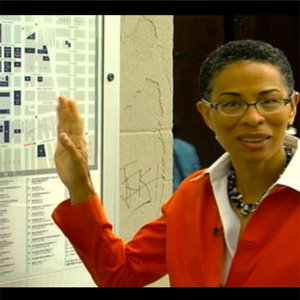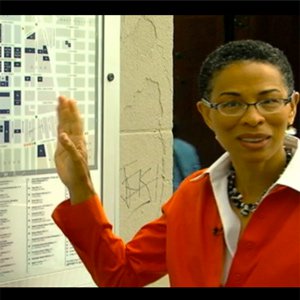

Sylvia Harris was a remarkable advocate of good design for real people—a Citizen Designer. She always lived her passions, so it is fitting that she named what was to be the last iteration of her professional practice Citizen Research & Design, which she envisioned as a research and planning firm designed to help public sector organizations better communicate with the people they serve.
The 2011 rebranding and repositioning of her firm, formerly Sylvia Harris LLC, was intended to help her achieve two things. On the one hand, Harris wanted to dig deeper into the field of research—to conduct rigorous investigations that would help organizations understand how people actually experience design systems. With that research in hand, she could set in motion intelligent plans for large-scale public design programs. At the same time, she wanted to build a practice that was bigger than herself—a band of citizens who would use their expertise on behalf of the common good. Although Harris had already accomplished a great deal in her life, her ambitious idea and new direction were cut short by her sudden and untimely death on July 24, 2011.
Harris’ journey began in her hometown of Richmond, Virginia. As a young black woman in the South during the 1960s, she experienced desegregation firsthand and, in the process, gained a visceral understanding of how social systems affect people’s daily lives. She cultivated an interest in design while studying with AIGA Medalist Philip B. Meggs at Virginia Commonwealth University, where she received a B.F.A. in 1975. A move to Boston to work with architects and in broadcast media was formative in opening her eyes to the depth and diversity of graphic design practice. At the WGBH design department, Chris Pullman, another AIGA Medalist, became a mentor and catalyst for her enrollment in the master’s program in graphic design at Yale University.
Right after graduating from Yale, in 1980, Harris cofounded Two Twelve Associates. While dealing with the challenges of building a new design practice, she honed the skills and interests that would ultimately propel her career. As the projects became larger and more complex, she relentlessly explored how to use all of the tools in a designer’s tool kit to create comprehensive public information systems. Her groundbreaking work in digital consumer banking systems for Citibank set an early standard for human-centered automated customer service.
At Sylvia Harris LLC, which she established in 1994 after leaving Two Twelve, she shifted her focus to design planning and strategy. In the process, she guided some of the nation’s largest hospitals, universities and civic agencies through systems planning, policy development and innovation management. As creative director for the United States Census Bureau, Census 2000, she was tasked with encouraging more Americans—including those who had been previously under-represented—to participate. Distributed to 80 million households, the 2000 Census presented an opportunity to study how a redesigned form might boost participation as well as public awareness of the Census brand.
Harris was a woman of great energy, passion and intelligence. She nurtured these qualities by reaching out beyond the walls of her studio. She had a remarkable ability to draw smart, talented young people into her network, making them collaborators and friends. And she generously gave back to the design community that she so vibrantly inhabited for more than three decades, mentoring students as a faculty member of Yale’s graphic design program and as a teacher at the School of Visual Arts, Cooper Union and Purchase College. She also served on the U.S. Postal Service’s Citizens’ Stamp Advisory Committee.
As a designer and a woman, Sylvia Harris always wanted to do the right thing, the smart thing, the thing that would make the biggest difference to the most people. She was the model citizen—a Citizen Designer.
